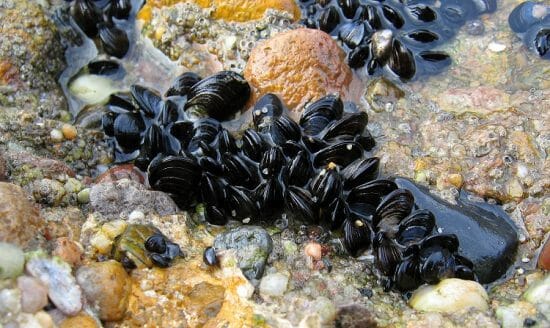Facultative Anaerobe Definition
A facultative anaerobe is an organism which can survive in the presence of oxygen, can use oxygen in aerobic respiration, but can also survive without oxygen via fermentation or anaerobic respiration. Most eukaryotes are obligate aerobes, and cannot survive without oxygen. Prokaryotes tolerate a wide range of oxygen, from obligate anaerobes which are poisoned by oxygen, to facultative anaerobes and obligate aerobes. Some prokaryotes are even aerotolerant, meaning they can survive in oxygen, but use anaerobic pathways for energy.
A facultative anaerobe can experience the best of both worlds. In times of low oxygen, a facultative anaerobe can use fermentation or anaerobic respiration to create ATP for the cells, typically still from the breakdown of glucose. The only real difference in these pathways from aerobic respiration is that they use a different electron receptor at the end of the pathway. Aerobic respiration relies on oxygen to accept electrons at the end of the electron transport chain. A facultative anaerobe can use a variety of other pathways to deal with these extra electrons, as discussed in the examples.
It should be noted that facultative anaerobes are sometimes referred to as facultative aerobes. The terms are generally interchangeable.
Examples of a Facultative Anaerobe
Yeast
A common facultative anaerobe is yeast, used in various cooking applications such as making bread or beer. In either case, this facultative anaerobe must function without oxygen. Yet, the yeast can still survive, and must for these products to come out right.
In bread, yeast is responsible for making the bubbles in the dough. These pockets of air make the bread light and fluffy. Otherwise, the bread would bake into a solid mass more like a cake or brownie. Yeast creates these air pockets through the release of carbon dioxide, a byproduct of converting the glucose in the dough into energy. For a lighter, more airy dough chefs often let the dough “rise”. This term simply means setting the yeast-laden dough in a warm place, and allowing the facultative anaerobe to do its work. Over the course of an hour or so, the yeast will create large amounts of carbon dioxide within the dough, expanding it and making it lighter.
In beer, wine, and other alcoholic beverages, yeast is the key ingredient. The process of fermentation, or the creation of alcohol, occur in yeast when they have plenty of sugar but little oxygen. Brewers and wine-makers use this aspect of the facultative anaerobe to generate the alcohol within their products. Aerobic respiration completely reduces glucose to a few recyclable molecules and carbon dioxide. Fermentation, on the other hand, leaves a final product: ethanol. Beer and wine makers create the ethanol (an alcohol) in their products by strictly controlling the amount of sugar and oxygen in their fermentation tanks. In these conditions any facultative anaerobe will resort to fermentation, and put off ethanol as a byproduct. When the alcohol reaches the proper level in the mixture, the yeast are filtered out and the drink is bottled.
Mollusks
While most think only of small, single-celled facultative anaerobes, several larger groups of animals have evolved the ability to survive without oxygen. One of these, the mollusks, has a group of organisms which have adapted to regularly survive stints without oxygen. Mussels, often found in intertidal areas, experience daily shifts in their access to water. When the tide drops, the mussels become exposed to the air, and must close their shells to avoid drying out. In some areas, the tide can go out for significant periods of time. The mussels cannot open their shells to get oxygen, or risk drying out and dying of dehydration.

To solve their conundrum, mussels like those in the image above have evolved the abilities of a facultative anaerobe. Instead of relying on their normal aerobic respiration when the tide goes out, the mussels switch to a form of energy which breaks down amino acids. This allows the mussel to survive hours, or even days, without getting a fresh source of oxygen.
Quiz
1. Humans muscles rely on aerobic respiration to produce the ATP necessary to work them. However, in times of stress and intense exercise, these muscles often run out of oxygen. In this case, the muscles must resort to a form of fermentation which produces lactic acid. Lactic acid can damage cells when it builds up, so the cells must quickly revert to aerobic respiration if they are to survive. Are humans facultative anaerobes?
A. No
B. Yes
C. Maybe
2. What is the difference between a facultative anaerobe and an obligate anaerobe?
A. A facultative anaerobe only has anaerobic pathways.
B. An obligate anaerobe can survive the presence of oxygen.
C. A facultative anaerobe can survive and use oxygen.
3. While scientists used to believe that facultative anaerobe organisms were typically single-celled remnants of an earlier time, evidence has showed that many gut parasites are often facultative anaerobes. Which of the following provides an explanation of this fact?
A. These organisms have a constant access to oxygen.
B. Often, areas of the gut are anaerobic, forcing these organisms to use an anaerobic pathway.
C. These organisms do not represent a facultative anaerobe.
References
- Brusca, R. C., & Brusca, G. J. (2003). Invertebrates. Sunderland, MA: Sinauer Associates, Inc.
- Muller, M., Mentel, M., Hellemond, J., & Henze, K. (2012). Biochemistry and Evolution of Anaerobic Energy Metabolism in Eukaryotes. Microbiology and Molecular Biology Reviews. doi:10.1128/MMBR.05024-11
- University of Comenius. (2018, October 3). Anaerobic Bacteria. Retrieved from Jfmed.uniba.sk: https://www.jfmed.uniba.sk/fileadmin/jlf/Pracoviska/ustav-mikrobiologie-a-imunologie/ANAEROBIC_BACTERIA.pdf
